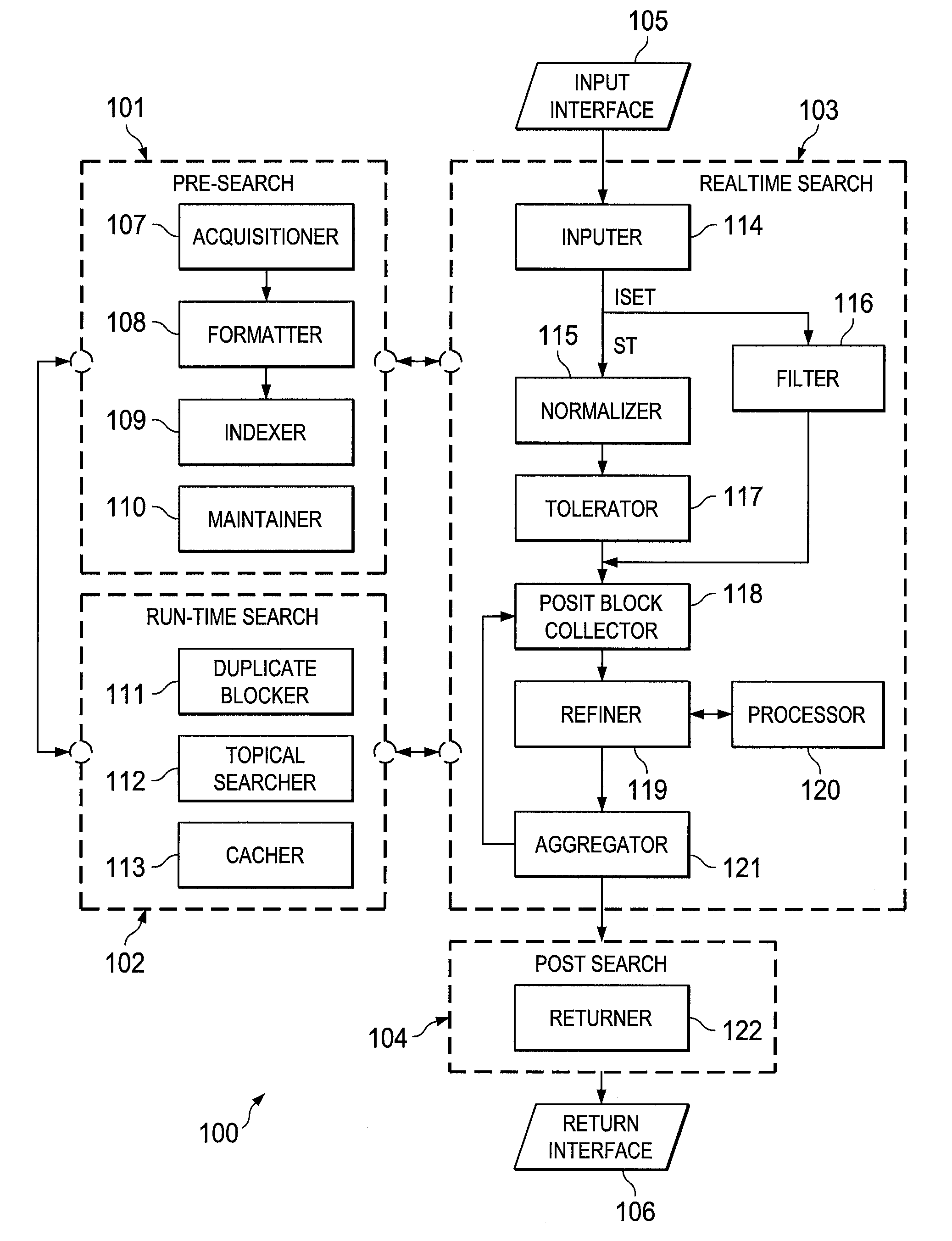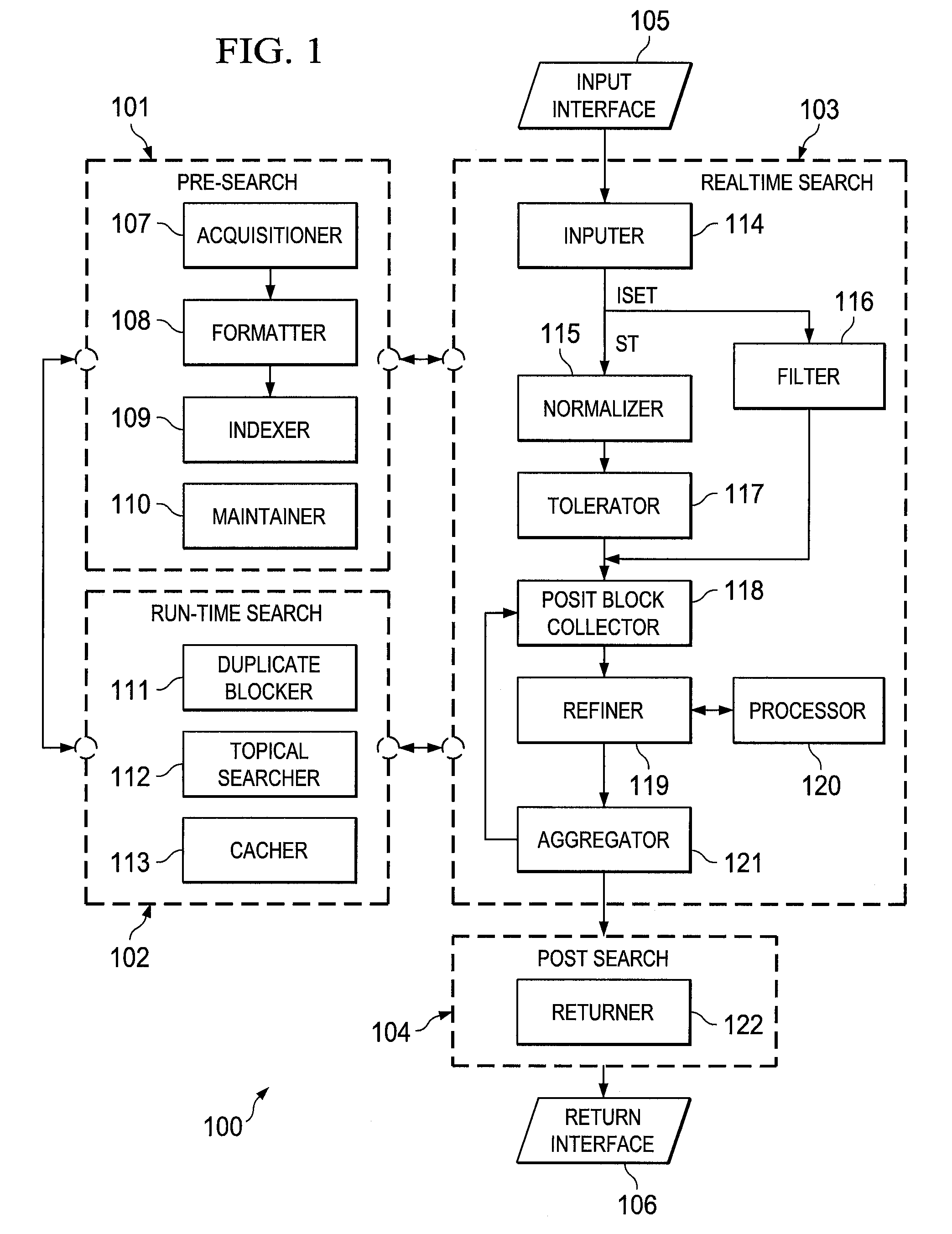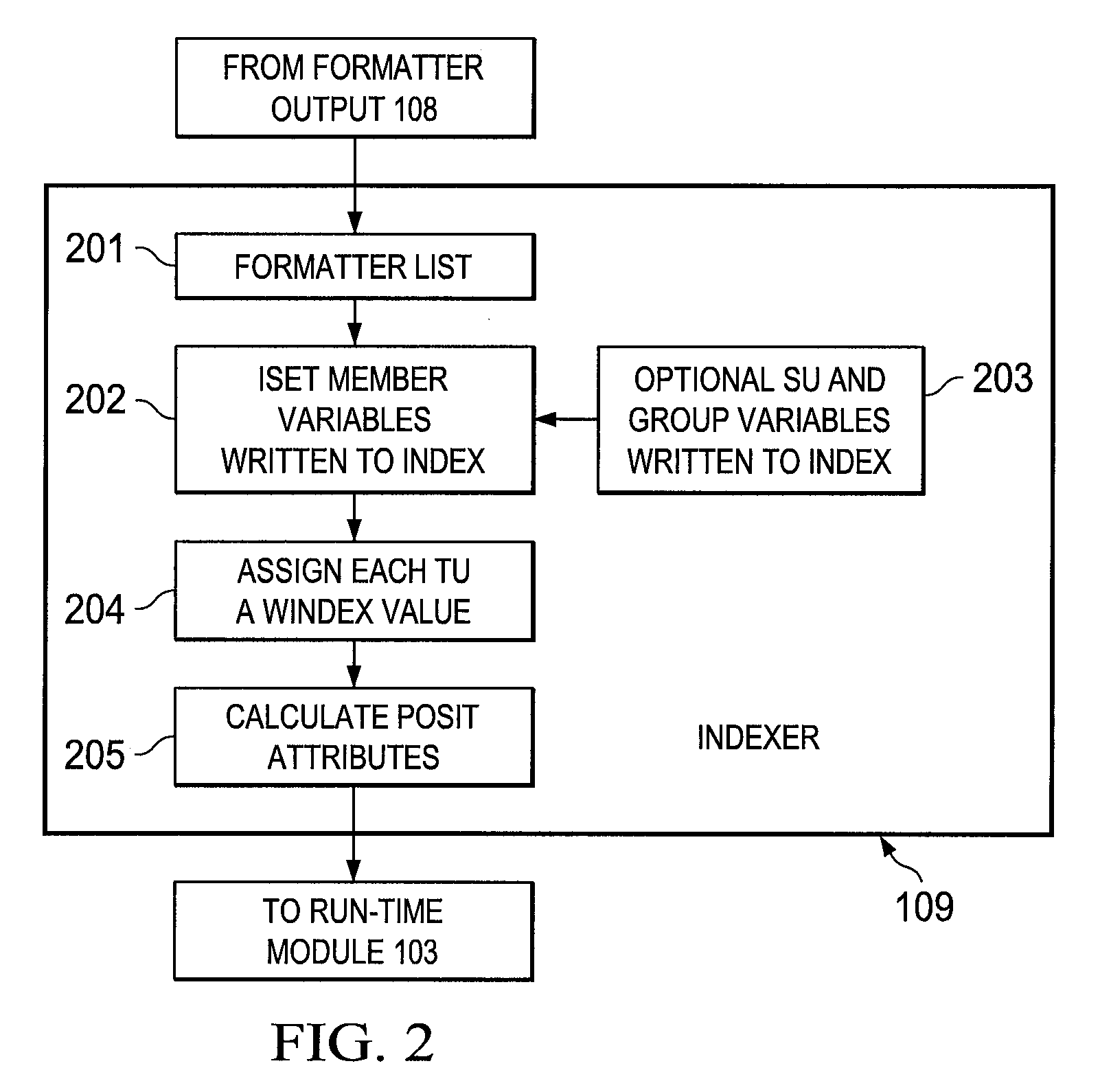Systems and methods utilizing a search engine
a search engine and search technology, applied in the field of information repository management, can solve the problems of different engines using different assumptions and compromises, personal data is subject to unauthorized use, and current technology has incomplete indexing of data or documents that is to be searched, so as to improve or enhance the search operation, improve the search effect, and improve the search effect.
- Summary
- Abstract
- Description
- Claims
- Application Information
AI Technical Summary
Benefits of technology
Problems solved by technology
Method used
Image
Examples
example
[0236]The following example is used to show how the search engine, according to embodiments of the invention, operates to index a short document and then finds a search term (ST) in the document using the index.
[0237]Short Document names “test” and is comprised of the text of “The quick brown fox jumped over a lazy dog. The fox then ran away.”
[0238]The search engine begins by acquiring the document is acquired by the system. English is the language of the document. A parse is done to locate the TUs by using the TU separator of the language; in this case, a space. The resulting strings are further broken down to remove external punctuation, creating an initial matrix.
Matrix1TheQuickBrownFoxJumpedOveraLazyDog.TheFoxThenRanAway.
[0239]The initial matrix is converted into a windex form, whereby the TU are replaced with a numeric code using the FTU matrix along with punctuation supported by the ASCII character set. Assume this is the first document being indexed by the search engine, and ...
PUM
 Login to View More
Login to View More Abstract
Description
Claims
Application Information
 Login to View More
Login to View More - R&D
- Intellectual Property
- Life Sciences
- Materials
- Tech Scout
- Unparalleled Data Quality
- Higher Quality Content
- 60% Fewer Hallucinations
Browse by: Latest US Patents, China's latest patents, Technical Efficacy Thesaurus, Application Domain, Technology Topic, Popular Technical Reports.
© 2025 PatSnap. All rights reserved.Legal|Privacy policy|Modern Slavery Act Transparency Statement|Sitemap|About US| Contact US: help@patsnap.com



